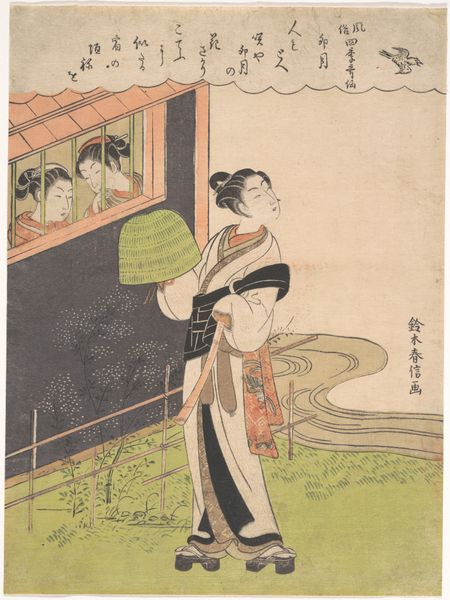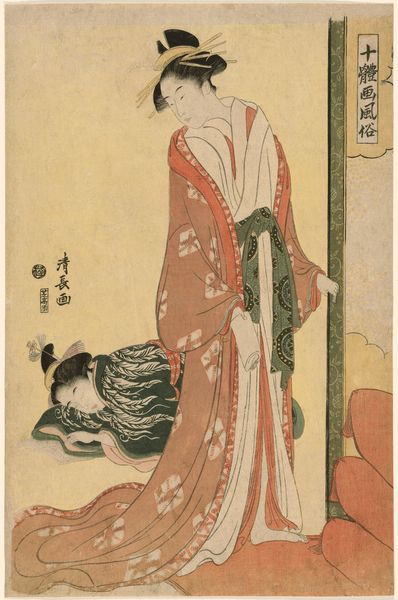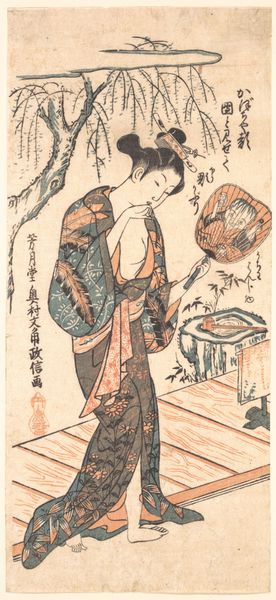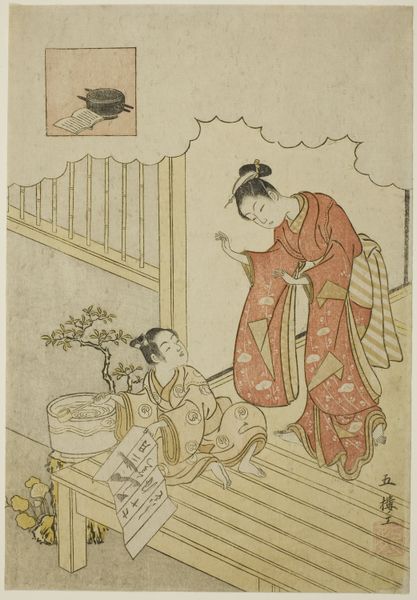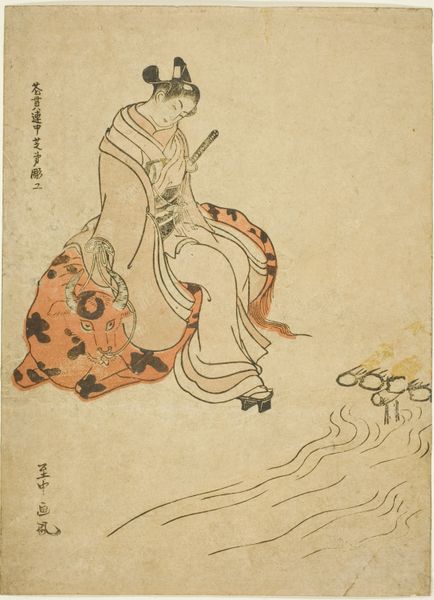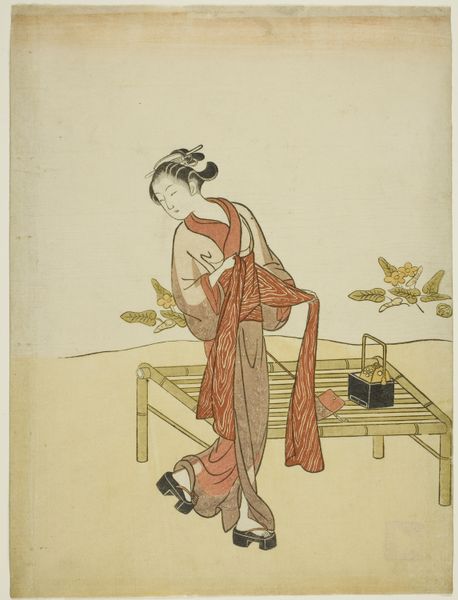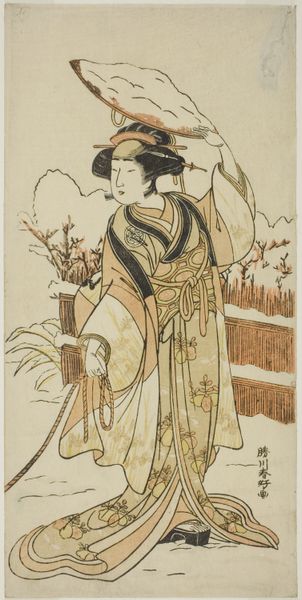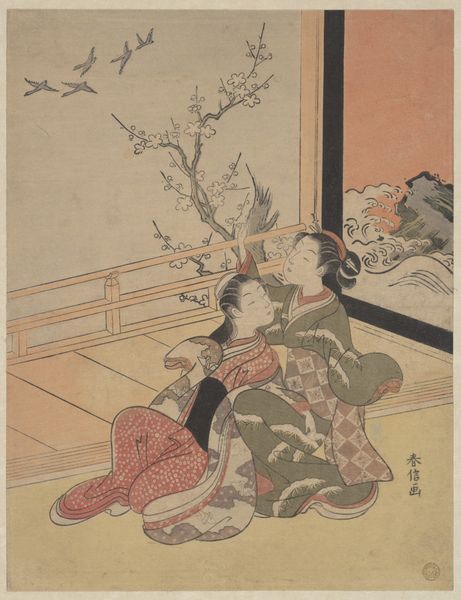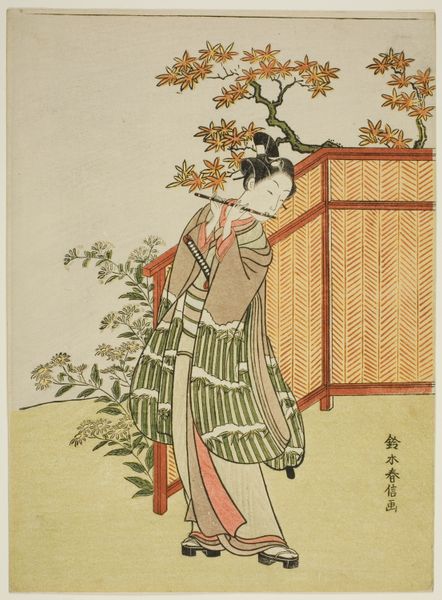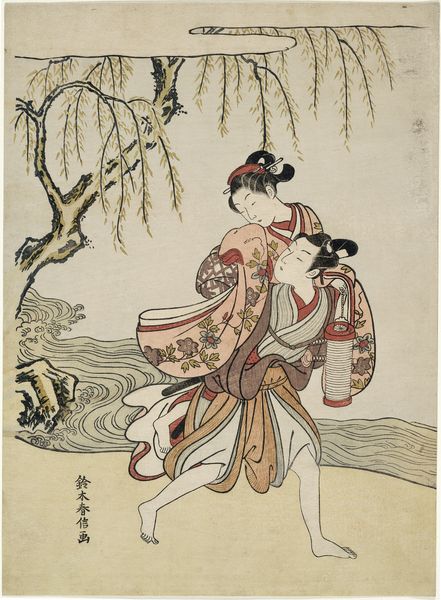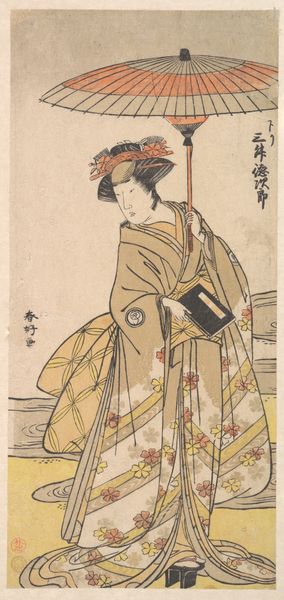
(Facsimile) The Fourth Month (Uzuki), from the series "Popular Versions of Immortal Poets in Four Seasons (Fuzoku shiki kasen)" c. 1768
0:00
0:00
Dimensions: 26.4 × 19.4 cm (10 3/8 × 7 5/8 in.)
Copyright: Public Domain
Curator: Suzuki Harunobu's "(Facsimile) The Fourth Month (Uzuki), from the series "Popular Versions of Immortal Poets in Four Seasons (Fuzoku shiki kasen)," created around 1768, is an excellent example of Ukiyo-e woodblock printmaking currently housed here at The Art Institute of Chicago. What strikes you initially about this print? Editor: The overwhelming sense of calm, and also the flatness—almost a dreamlike quality in the way the figures are presented with very few tonal shifts. Curator: Absolutely, the serenity is palpable. We see a woman standing with a fan, perhaps pausing to listen, while two other women peer out from behind a latticed window. I think the piece also offers interesting insight into the socio-cultural dynamics of the era and the restricted role of women in Japanese society at the time, looking out into the open world from an enclosed space. The fan itself hints at class and the leisure. Editor: The fan definitely draws the eye and speaks of social position, but I am most intrigued by the materials involved in creating this print. Think about the precise carving required for each color block and the physical labor inherent to the printmaking process. Curator: True, there's a tension between the idealized imagery and the highly skilled labour needed to produce such an aesthetic experience, yet what I love most is how Harunobu plays with themes of beauty and the seasons. He draws inspiration from classical poetry, connecting these women to timeless artistic and cultural traditions. Editor: I appreciate your attention to cultural lineage and this idea of leisure, though the actual creation of this image belies any easy categorization as luxury, particularly with the extensive wood cutting. The multiple blocks needed to create a single colored image surely points to more complex social structures. Curator: I can see how it makes sense that a materialist lens reveals a nuanced portrait of production, while an intersectional approach unearths broader commentaries on societal expectations and lived experiences across diverse subjectivities. It really reveals more and more each time. Editor: Precisely. Understanding the labor enriches my appreciation for the image and helps me place it within a larger narrative of human production and social structures. A wonderful work, and a good demonstration that attention to method can create insight to cultural forces and societal structure.
Comments
No comments
Be the first to comment and join the conversation on the ultimate creative platform.
